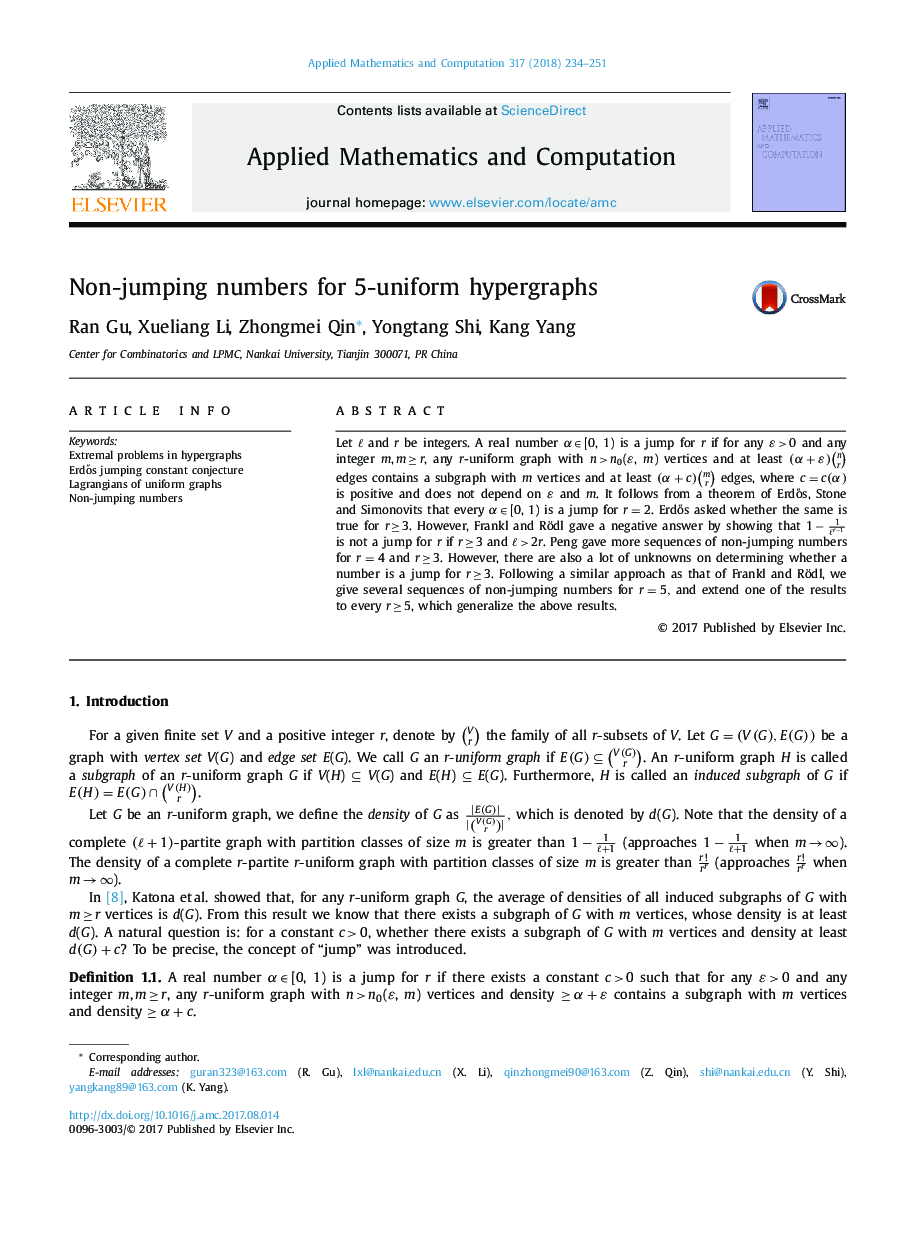| Article ID | Journal | Published Year | Pages | File Type |
|---|---|---|---|---|
| 5775535 | Applied Mathematics and Computation | 2018 | 18 Pages |
Abstract
Let â and r be integers. A real number αâ¯ââ¯[0, 1) is a jump for r if for any εâ¯>â¯0 and any integer m,âmâ¯â¥â¯r, any r-uniform graph with nâ¯>â¯n0(ε, m) vertices and at least (α+É)(nr) edges contains a subgraph with m vertices and at least (α+c)(mr) edges, where c=c(α) is positive and does not depend on ε and m. It follows from a theorem of ErdÅs, Stone and Simonovits that every αâ¯ââ¯[0, 1) is a jump for r=2. ErdÅs asked whether the same is true for râ¯â¥â¯3. However, Frankl and Rödl gave a negative answer by showing that 1â1ârâ1 is not a jump for r if râ¯â¥â¯3 and ââ¯>â¯2r. Peng gave more sequences of non-jumping numbers for r=4 and râ¯â¥â¯3. However, there are also a lot of unknowns on determining whether a number is a jump for râ¯â¥â¯3. Following a similar approach as that of Frankl and Rödl, we give several sequences of non-jumping numbers for r=5, and extend one of the results to every râ¯â¥â¯5, which generalize the above results.
Related Topics
Physical Sciences and Engineering
Mathematics
Applied Mathematics
Authors
Ran Gu, Xueliang Li, Zhongmei Qin, Yongtang Shi, Kang Yang,
